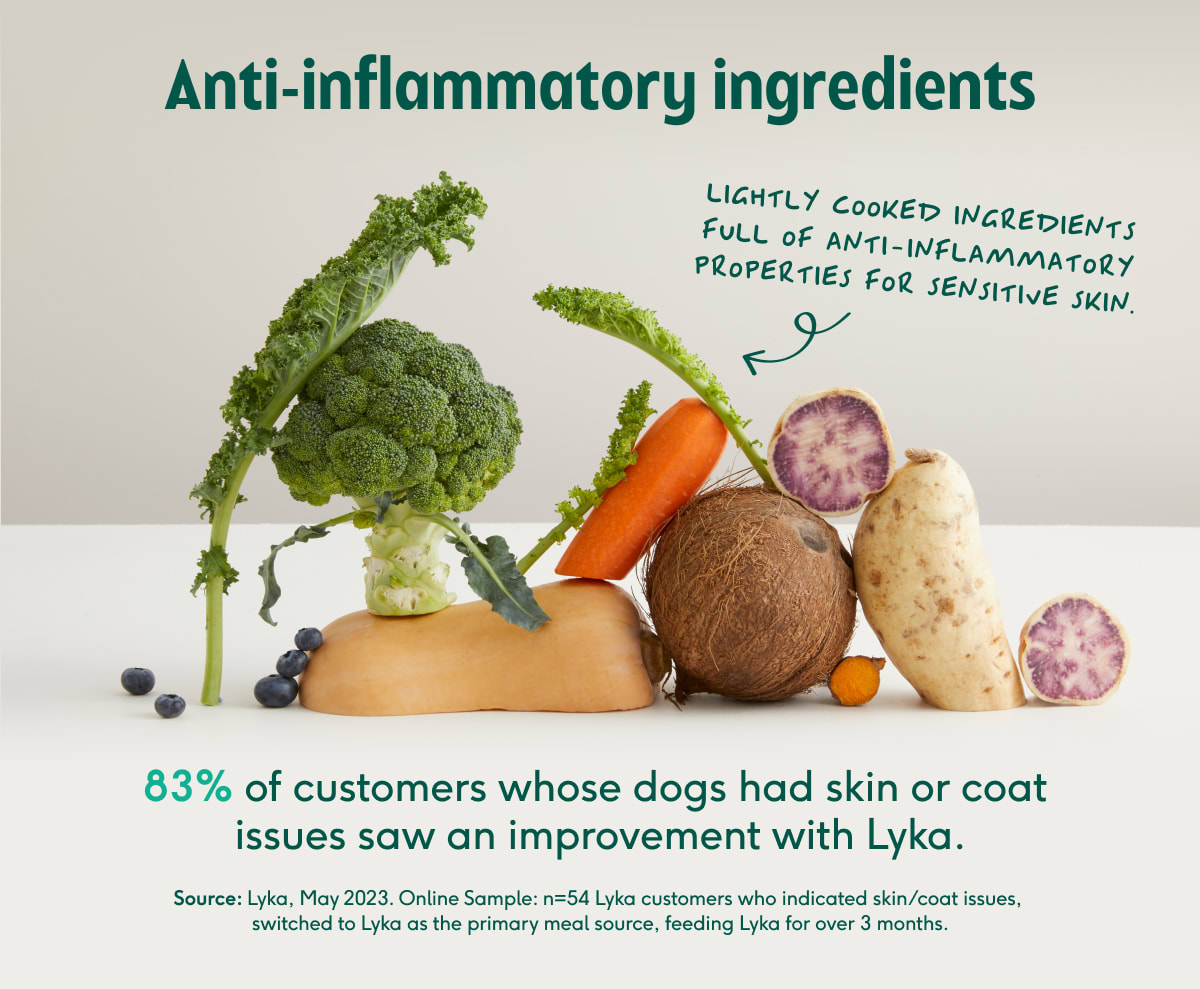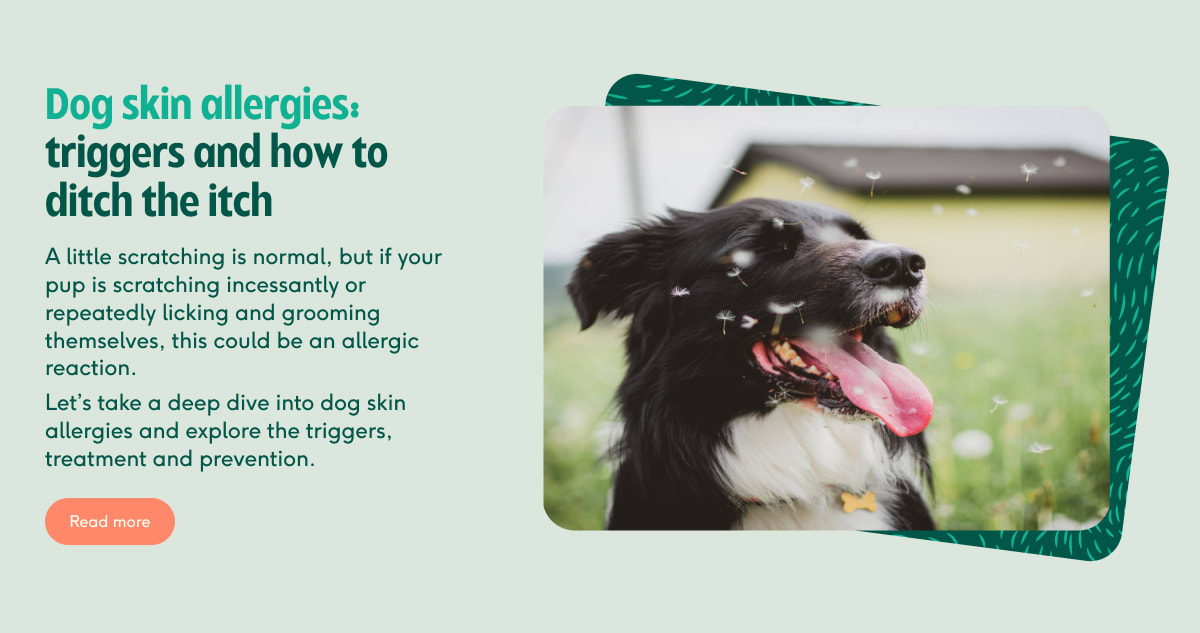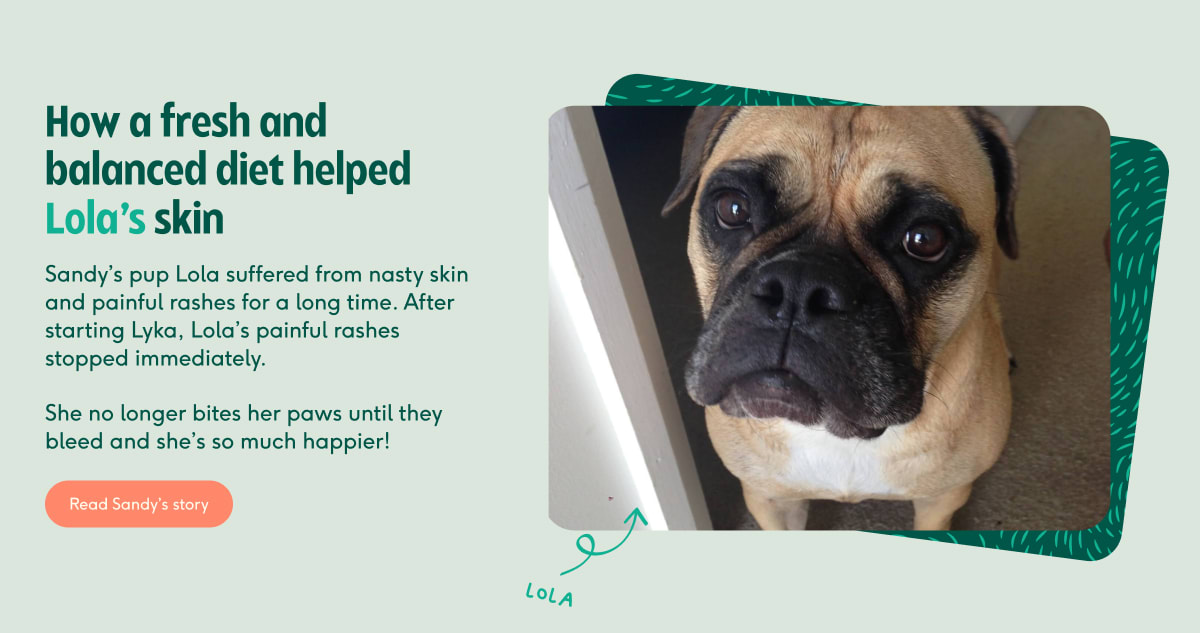9 common dog skin conditions: How to spot and treat them

By Olivia Blazevic

There’s nothing like a good scratch to relieve an itch. But if your dog is scratching more than usual, it could be a sign of a skin condition.
The skin is the first barrier of defence against harmful germs and irritants. Its condition can also give us important clues about our dog’s health. Allergies, parasites, infections and even stress can affect their coat and skin.
We’ve compiled a comprehensive guide to the symptoms and treatment of common dog skin conditions to help you and your dog ditch the itch.
Skin condition signs and symptoms to look out for
Skin conditions usually have more than one symptom. Look out for these other common signs:
Persistent scratching
Repeated licking
Patchy coat or dry and brittle hair
Hair loss
Redness and rashes
Hives
Pustules (bumps that contain pus and look like pimples!)
Lesions (wounds or scabs)
Scaly or crusty skin
1. Allergies
Like humans, dogs can experience an allergic reaction to something they’ve ingested or an environmental trigger.
Flea allergy dermatitis (FAD)
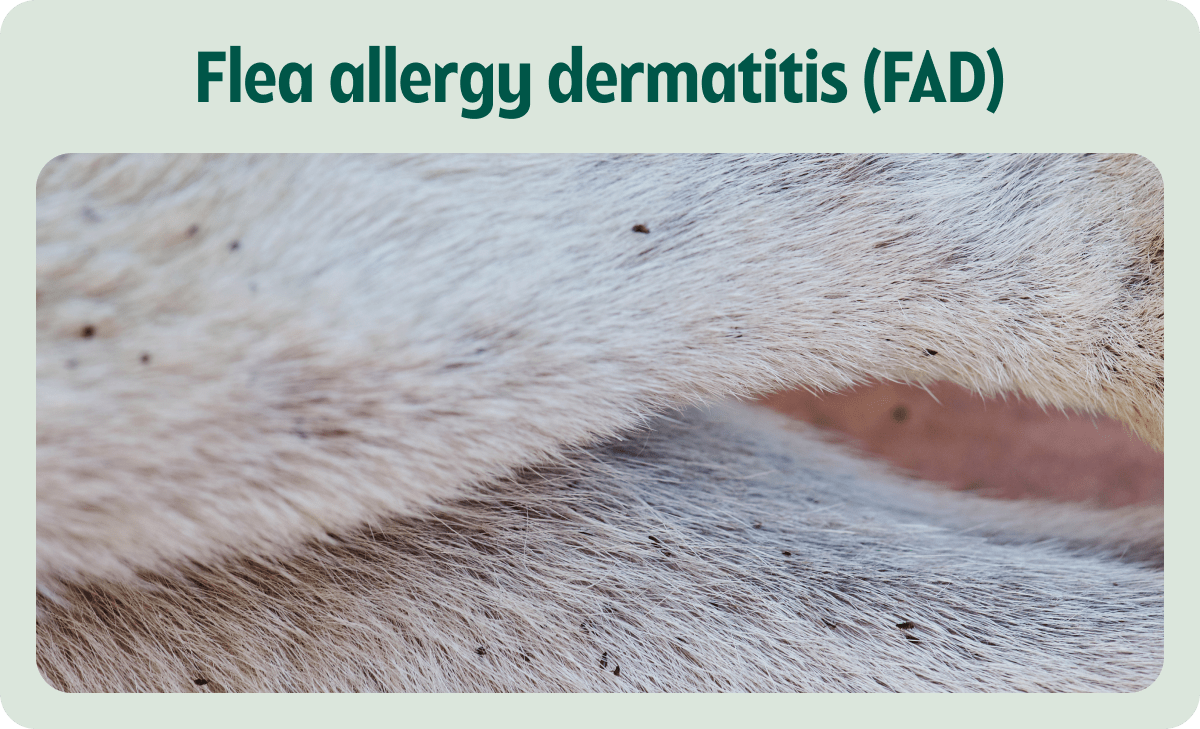
When a flea bites a dog (or human, for that matter), it releases saliva into the bloodstream that contains antigens. The dog’s body identifies it as an allergen and releases histamines, which cause localised swelling, redness and itchiness.
Flea allergy dermatitis symptoms: Flea bites form small red itchy bumps on the skin. You may also spot flea dirt (faeces) that are little brownish-red spots. If your dog has FAD, there will be itchiness and possibly hair loss in the “flea triangle” — the area from the middle of the back to the base of their tail and down their rear legs.
Flea allergy dermatitis treatment: If it is a mild reaction to a few bites, you can give them a cool bath with a soothing medicated shampoo. If the bites have triggered FAD, your pup may require treatment from their vet. Protect your pup against fleas by using flea prevention treatments or aids.
Environmental allergies
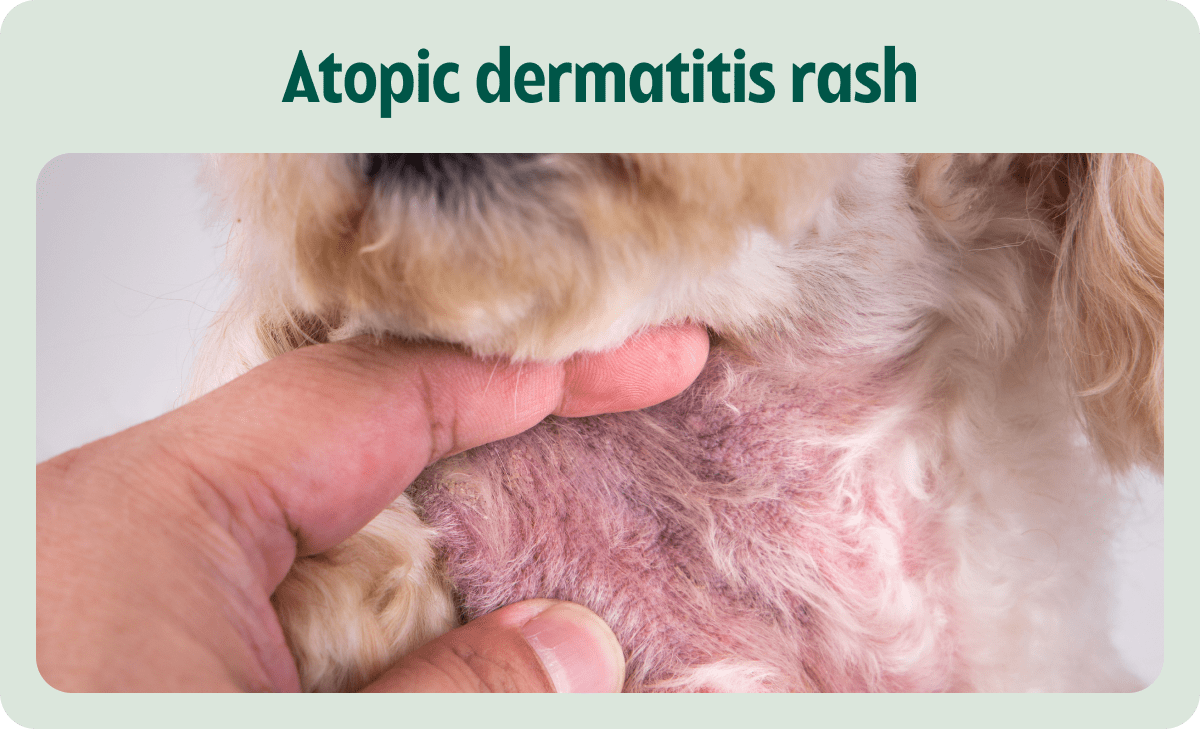
Environmental allergens cause a whopping 90% of allergic reactions in dogs.These might be seasonal triggers like pollen and other allergens including dust, mould, smoke and pesticides.
Atopic dermatitis, a chronic inflammatory skin disease, is the allergic response to air-borne particles entering skin through a weakened immune barrier. Contact allergies are also triggered by skin contact with the allergen, like running through long grass or rolling on the ground.
Environmental allergy symptoms:
Persistent itching or rubbing
Ear infections
Chewing or licking paws
Sneezing
Watery eyes
Hives, sores, redness or rashes
Hair loss
Greasy or tough, dry skin
A yeasty smell
Environmental allergy treatment: Treatment depends on the trigger, so consult your vet for advice.
Try to limit your pup’s exposure to the allergen where possible and give them a good wipe down with a damp cloth after a walk or use a medicated shampoo to soothe the skin.
Antihistamines can be given but always check the correct dosage with your vet. Anti-fungals or antibiotics can remedy skin infections or more significant treatments may include allergen immunotherapy (AIT) or immunomodulatory medication.
Boost your pup’s natural immune response by feeding them antihistaminic or anti-allergy bioactive foods like shiitake mushrooms.
Food allergy dermatitis
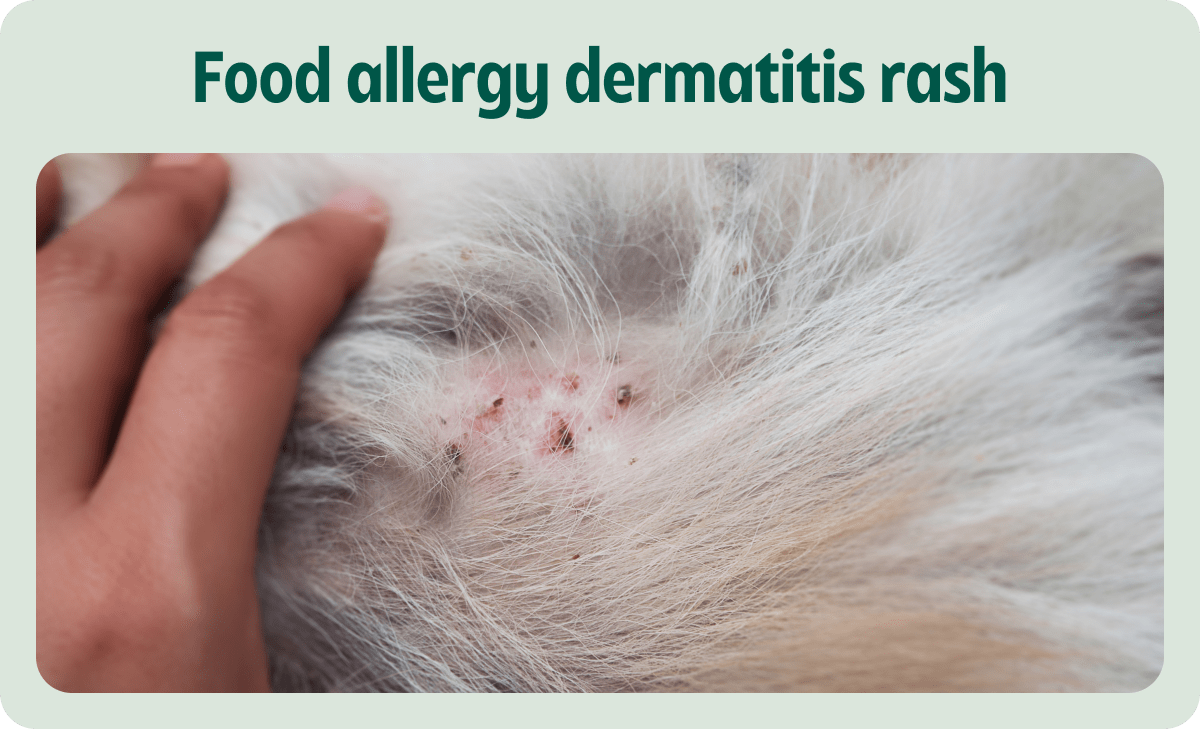
Food allergies are quite rare in dogs and usually require prolonged exposure to problematic food. An intolerance to an ingredient is more likely.
Food allergy dermatitis symptoms:
Itchy skin and ears
Sores on their paws
Vomiting
Diarrhoea
Weight loss
Change in energy levels
Food allergy dermatitis treatment: The most effective treatment is to remove the ingredient from the diet. An elimination diet can help you identify which food is causing the reaction.
2. Dandruff
Dandruff is flakes of dead skin that are visible on your dog’s coat. You may also notice them on bedding, blankets or other surfaces they’ve been relaxing on.
Dandruff symptoms: Dandruff is a symptom of other issues like dry skin, parasites, allergies, hormonal imbalances, nutritional deficiencies, infection or irritation.
If you notice dandruff, keep an eye out for other symptoms such as redness, scaly skin or bald patches, which may suggest your pup has walking dandruff (Cheyletiellosis) — a highly contagious parasitic infection caused by mites.
Dandruff treatment: Keep your pup well-groomed to prevent matting, which irritates the skin and causes dandruff. Treat dry skin with a soothing dog dandruff shampoo to ease the issue.
For walking dandruff, a topical treatment from the vet may be required. The mites are usually susceptible to ingredients in flea and tick control medications, so keep these up to date, too.
Adding omega-3’s to your pup’s diet can reduce itchiness and dry skin by up to 50%. Give your pupper their glow back with a diet that’s rich in essential fatty acids.
3. Yeast infections

It’s normal to find yeast on the skin of all creatures, but when there’s an overabundance, it can cause issues. Yeast loves a warm, dark and moist environment, so check for an infection on your dog’s paws, belly, pits, ears, skin folds and groin.
Yeast infection symptoms: If your dog has a yeast or fungal infection, they might have a rash on their tummy, or their skin might appear greasy, thickened, flaky or discoloured — we’re talking pinky red or greyish brown. You might also notice excessive scratching, rubbing or licking, hair loss or an unpleasant musty odour. If it’s in their ears, they will probably tilt and shake their head more often than usual.
Yeast infection treatment: Usually, yeast can be kept in check by your dog’s natural immune system. When there’s a yeast infection, it’s usually a sign that their immunity has been compromised by an underlying issue, such as:
Hypothyroidism: Underperforming thyroid glands lead to low levels of the thyroid hormone, which then weakens the skin and immune system.
Hypoadrenocorticism (Cushing’s disease): A growth in the pituitary or adrenal gland leads to an overproduction of cortisol, which also weakens the skin and the immune system.
Flea/Tick medicine: Some flea/tick preventative medications can put stress and strain on your pup’s immune system.
It may also be worth exploring whether your dog is intolerant to the shampoos you’re using. Oatmeal-based shampoos are notorious for making yeast issues worse.
Consult your vet who will swab the affected area, diagnose the problem and prescribe the appropriate medication for the yeast and any underlying issues.
A diet that contains rapidly fermentable simple carbohydrates (wheat, corn and other cereals) can feed a yeast infection via a mechanism known as diet-driven inflammation. Opt for a fresh wholefood diet like Lyka, which reduces inflammation and increases immune function.
4. Ringworm
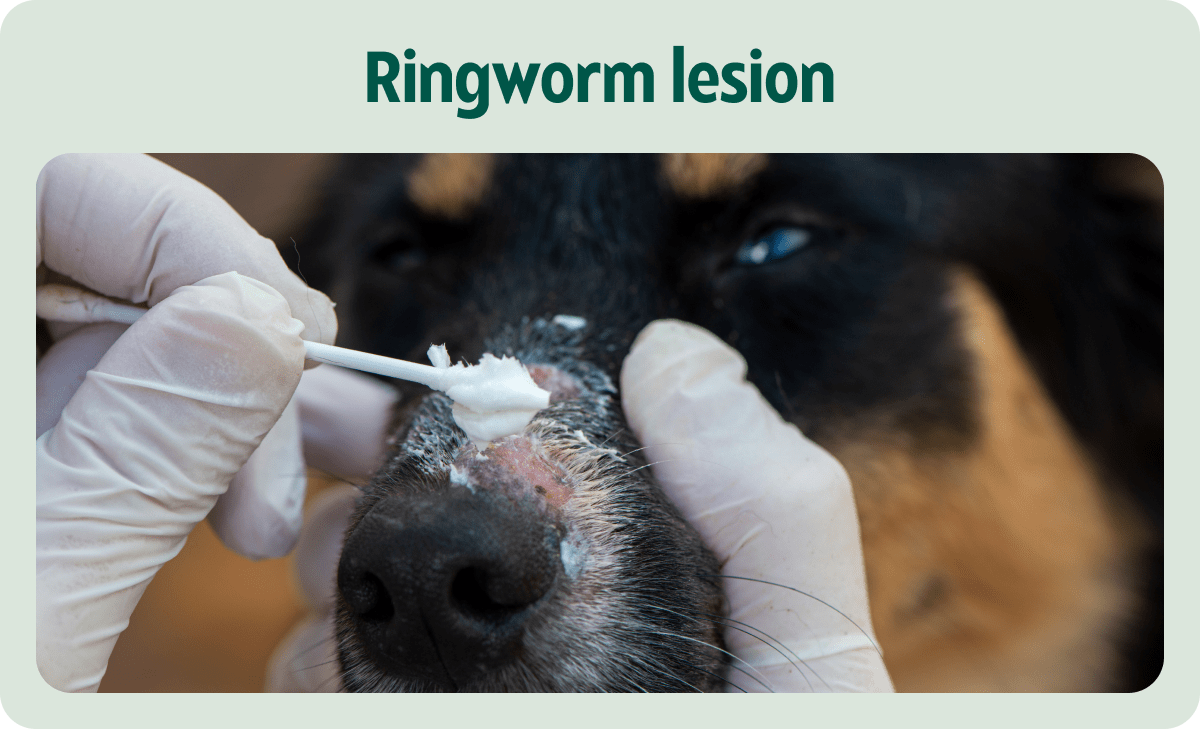
Despite the name, ringworm isn’t a worm, it’s a fungal infection. It’s highly contagious and spreads via direct contact with the skin lesion. The spores can also spread via your dog’s coat, bowls, bedding, carpet and other furniture.
Although ringworm in dogs is very contagious, the risk is greater for pets who are stressed or have weakened immunity, so it’s common in animal shelters or boarding kennels.
Ringworm symptoms:
Red skin lesions (often in a ring-shaped rash)
Scaly skin
Itchiness
Broken hair and hair loss
Rough and brittle claws
Ringworm treatment: Your vet can use a special UV light to spot ringworm infections or can swab and test the affected area. Usually, a pup is prescribed a topical treatment for the skin and an oral anti-fungal treatment.
Malnutrition or a diet lacking in one or more nutrients can impair the production and activity of immune cells and antibodies. Diets that are limited in variety and lower in nutrients, such as ultra-processed foods like kibble, can negatively affect a healthy immune system.
By feeding a fresh, wholefood Lyka diet, your pupper will have a better chance at building a strong defensive barrier. Supercharge their immune system further with the Mind and Body Multi Supp — our supplement combination to boost gut health, immunity, and skin and coat health.
5. Shedding and hair loss
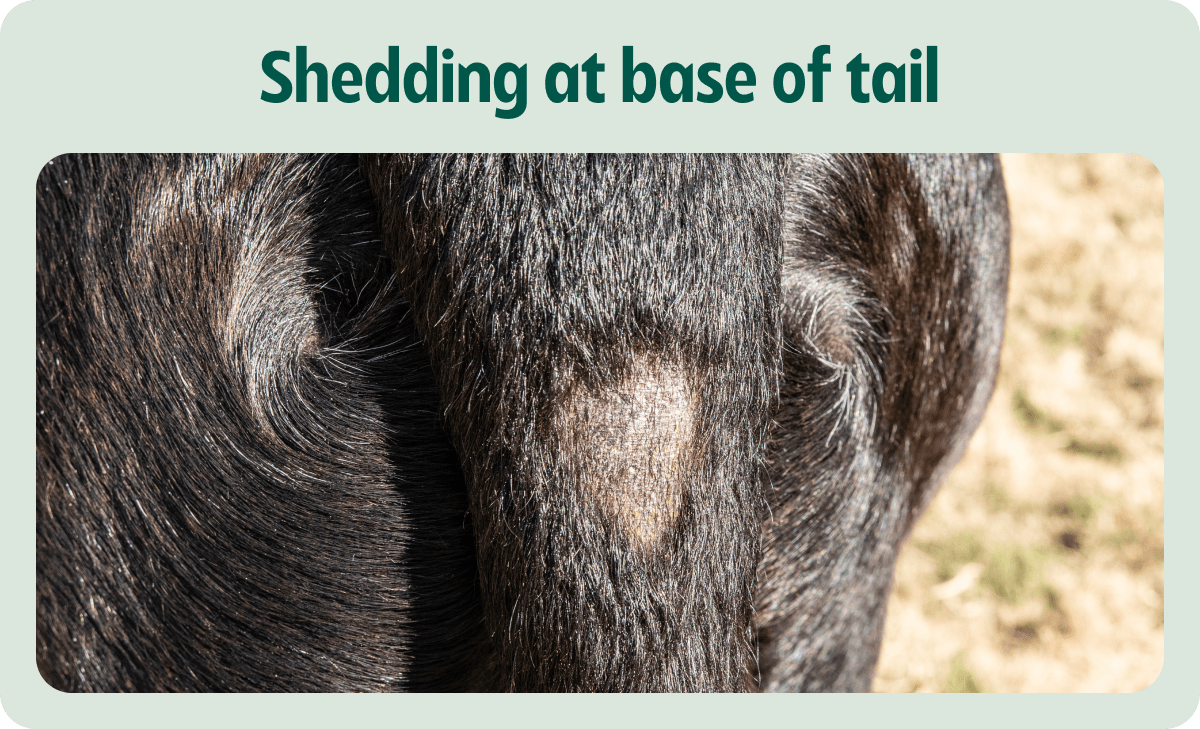
Although shedding is a normal biological process, it can be more prominent in some breeds and some climates and seasons.
Excessive shedding can occur as a result of excessive itching, which is a symptom of many skin conditions rather than a specific sign of disease. It can also occur as a result of other underlying conditions including endocrine disorders, like hypothyroidism and Cushing’s disease.
Shedding and hair loss symptoms:
Shedding more than usual
Dry, brittle, patchy or thinning coat
Shedding and hair loss treatment: Excessive shedding or fur loss can often be a result of a poor diet. Commercial, highly processed pet foods often use cheap, low-quality ingredients that don’t contain all the nutrients your dog needs to maintain a healthy coat.
Fish oil is one of the best supplements to add to your pup’s diet, as omega 3’s provide essential proteins and nutrients to hair follicles and skin, reducing hair follicle inflammation — a factor that can directly contribute to hair loss.
6. Mange/Demodex
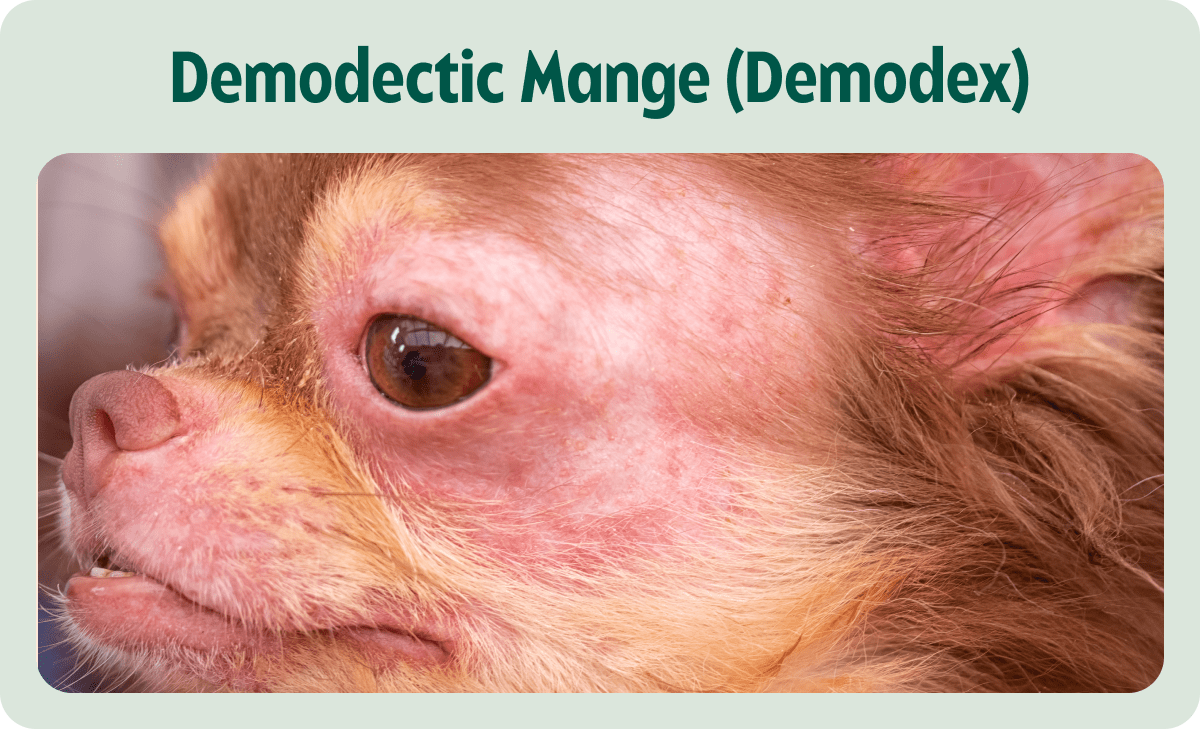
Demodectic Mange or Demodex is caused by microscopic parasitic mites that live in hair follicles. Most dogs and humans have a few of these mites on their skin — they can be harmless as long as the host’s immune system is strong and healthy. For mange to develop, the pup’s immune system needs to be compromised or immature.
Mange/Demodex symptoms: Mange dog skin conditions can be localised to a small area and cause red, scaly skin and patches of hair loss. If Demodex is generalised, it can cause scaling, swelling, crusty skin, self-inflicted wounds (from scratching) and significant hair loss (alopecia).
Mange/Demodex treatment: Localised mange can recede without intervention. Serious cases can be treated with topical medication and special shampoos.
Support your pup’s immune system with a diet full of natural antioxidants like Vitamin E, Vitamin C and Beta-Carotene.
7. Zinc-Responsive Dermatosis (ZRD)
ZRD is a rare skin disorder resulting from zinc deficiency or malabsorption in the small intestine.
ZRD symptoms: Red, scaly, crusty, thickened skin. Lesions are often found around the pressure points (elbows and paw pads) and/or around the eyes, nose and ears.
ZRD treatment: ZRD can be prevented with a complete and balanced diet, which contains the appropriate level of bioavailable zinc. Avoid phytates that are found in legumes, whole grains and seeds, as these can reduce the body’s ability to absorb zinc and other important minerals.
The ratios of zinc, calcium and copper within our Lyka recipes and the lack of phytate content support the effective absorption of these essential minerals.
8. Hot spots (pyotraumatic dermatitis)
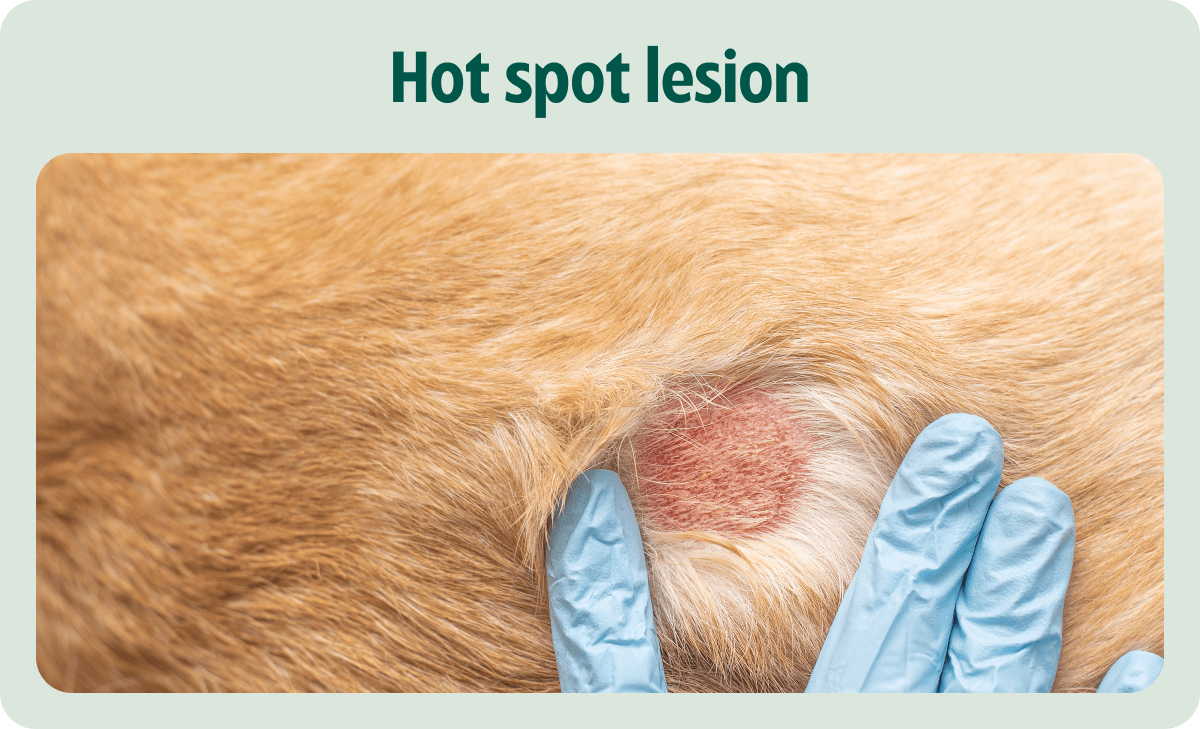
Hot spots are very common skin complaints in dogs, usually caused by an underlying issue such as an allergy, bite or infection. They can be found anywhere on the body, but are frequently found on the head, hips and legs.
Hot spot symptoms: Red and inflamed skin lesions that may ooze pus or form a scab. Hot spots are usually caused by self-inflicted trauma to the skin that triggers a vicious cycle of scratching and licking that enlarges the wound. Warm, humid weather can exacerbate the problem.
Hot spot treatment: In treating hot spots, address the underlying issue first, then treat the wound to prevent further infection and discourage further itching and licking. Clipping the hair short can encourage the wound to dry and form a scab, but you may need to use a cone or a protective barrier over the area to stop further damage.
A processed diet high in carbohydrates can cause chronic hot spots from its pro-inflammatory properties. A fresh food diet with anti-inflammatory ingredients and omega-3s can provide vital skin-boosting nutrients.
9. Folliculitis
Inflammation of the hair follicles (folliculitis) is a common skin condition triggered by bacterial or fungal overgrowth, parasites, hot spots, allergies, or other underlying problems.
Folliculitis symptoms:
Swelling
Redness
Itchiness
Pustules
Hair loss
Folliculitis treatment: Your vet can diagnose if there is an underlying cause and provide you with appropriate treatment that may include topical medication, special shampoo or antibacterial or antifungal treatment.
Ditch the itch with fresh wholefoods
The skin is the biggest organ, so any dog skin conditions should be addressed early on before they become more problematic. Preventive care through a fresh, wholefood diet is an effective way to boost health, and nutrition and support a strong immune system.
This article was reviewed by Lyka’s animal care experts.
Reviewed by:
Dr. Darcy Marshall BSc (Hons), Doctor of Veterinary Medicine
Louise Hawkins, Qualified Veterinary Nurse and Research and Development Associate
